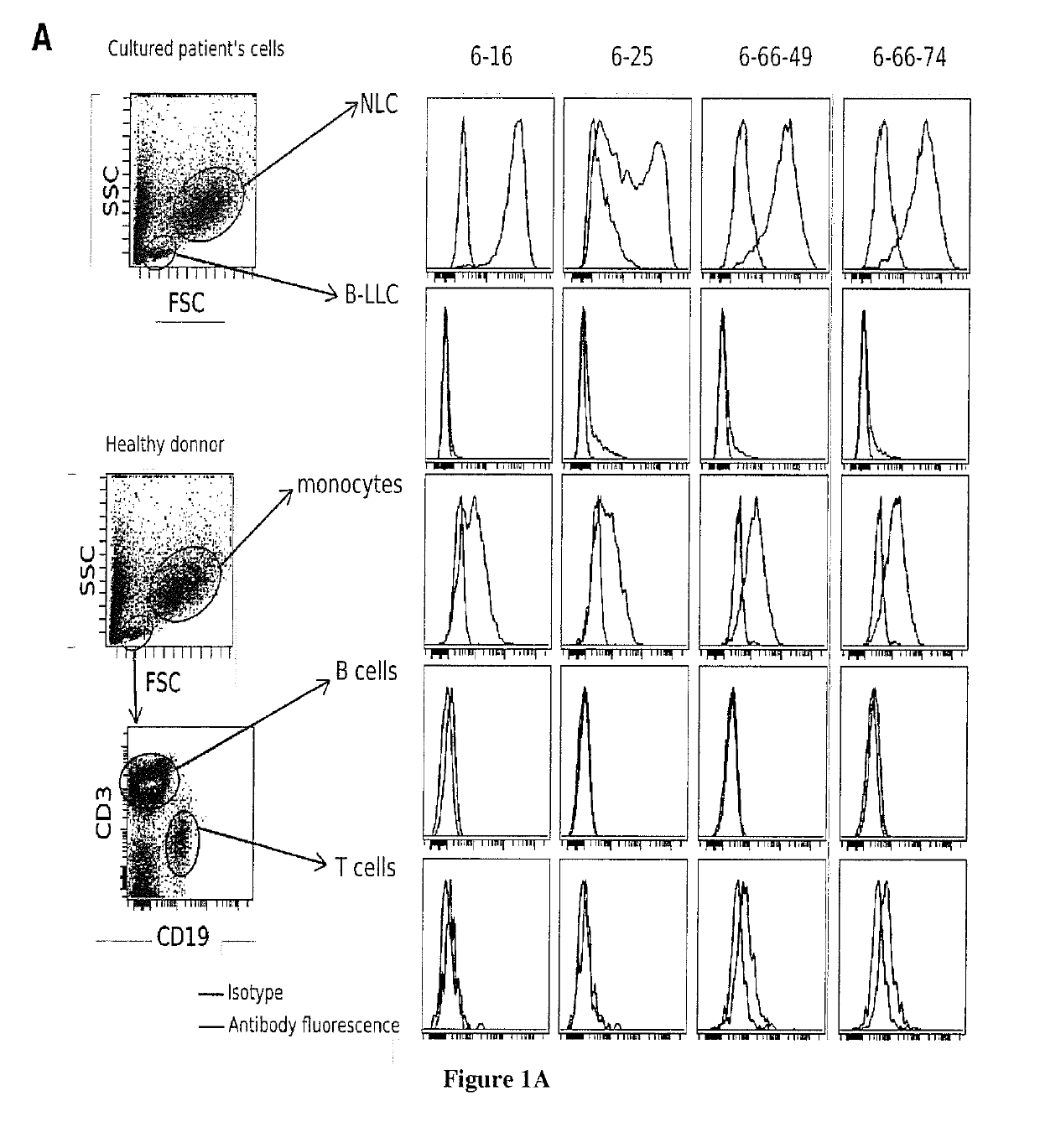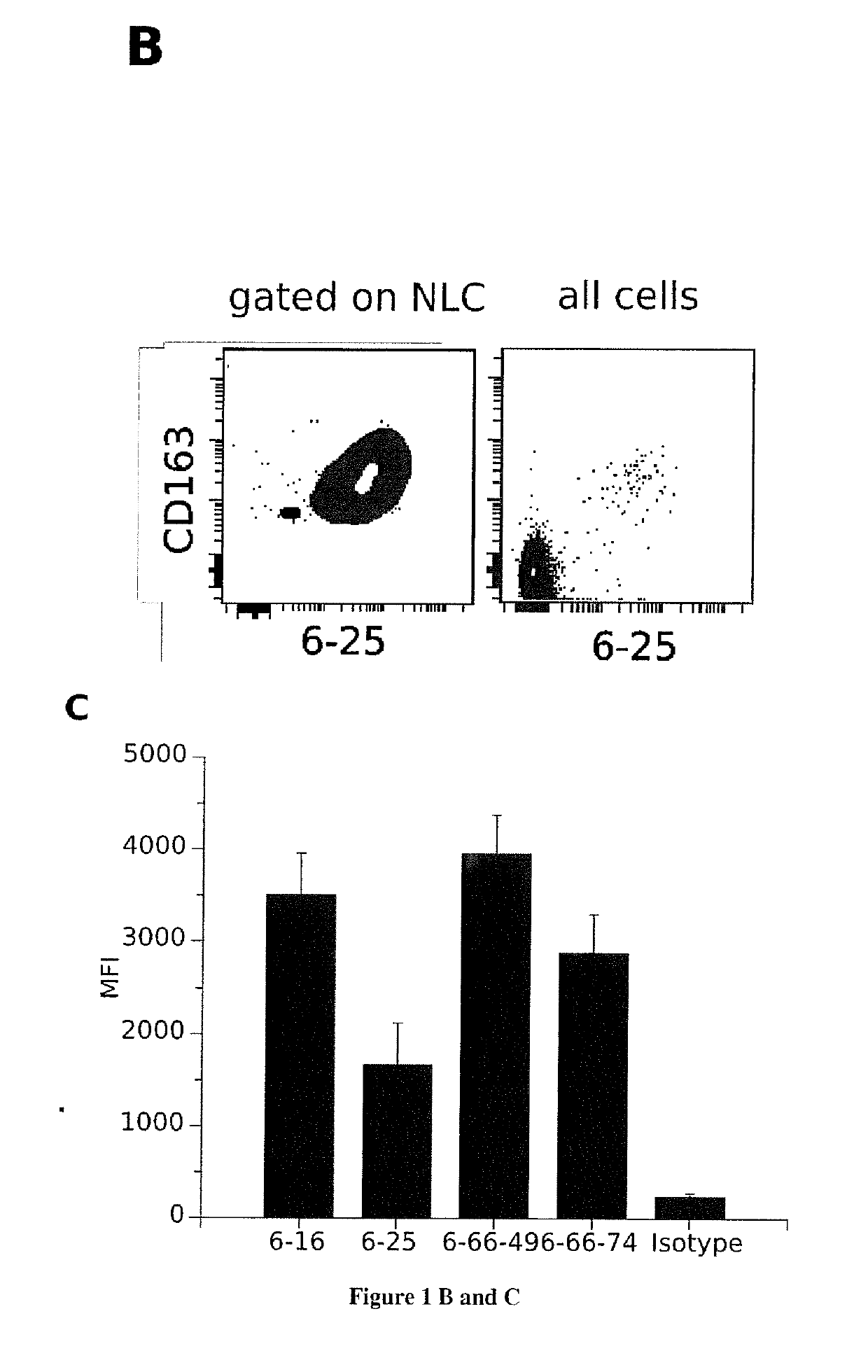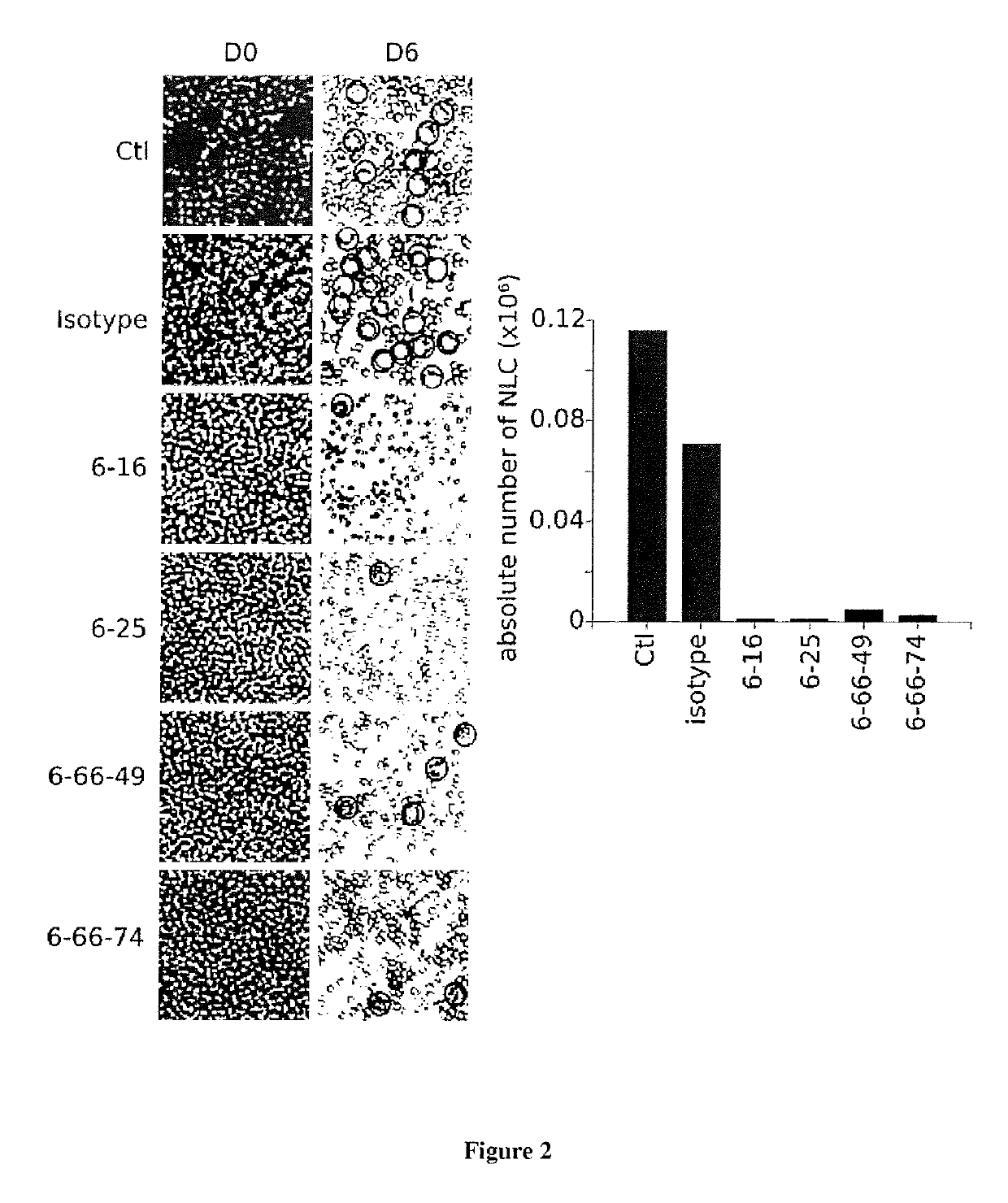Methods of treatement of cancer disease by targetting tumor associated macrophage
a tumor associated macrophage and cancer disease technology, applied in the field of cancer disease treatment by targeting tumor associated macrophages, can solve the problems of tams that cannot be properly classified and identified, may be self-limiting, and may not be able to fully function,
- Summary
- Abstract
- Description
- Claims
- Application Information
AI Technical Summary
Benefits of technology
Problems solved by technology
Method used
Image
Examples
example 1
XIN TO TARGET TUMOR ASSOCIATED MACROPHAGES
[0141]Material & Methods
[0142]PBMC from patients were isolated using Ficoll and cultured 10 days at 10 106 cells / ml in RPMI 10% FBS. Then supernatant were removed and adherents cells (NLC) were washed twice with PBS. NLC were detached using cell scraper, counted and dried pellets were freezed. Dry pellets of non adherent cells were also freezed. NLC from several patients were pooled and membrane proteins were extracted using the “Proteo-extract native membrane protein extraction kit” (Calbiochem).
[0143]Pierce™ High Capacity Streptavidin Agarose beads (thermo Fisher Scientific) were incubated with goat anti mouse IgG-biotin (Sigma Aldrich, B7401) 20 minutes at room temperature, washed three times and then incubated 2 hours at 4° C. with hybridoma's supernatant culture medium or with a control medium. After three PBS washes, coated beads were incubated over night at 4° C. with 500 μg of membrane proteins from NLC or non-adherent cells. Beads w...
example 2
OF TUMOR ASSOCIATED MACROPHAGES
[0151]Material & Methods
[0152]Production of Antibodies Against NLC
[0153]NLC were generated from culture of PBMC isolated from blood samples of patients with chronic lymphoid leukemia (CLL) at 10 106 cells / ml in RPMI 10% FBS. After 14 days of culture at 37° C. and in a 5% C02 atmosphere, B leukemic cells were removed and adherent cells (NLC) were collected. Between 3 and 15 millions of NLC from different donors were injected to mouse in intraperitoneal four times every 15 days. Splenocytes were then isolated from the spleen and fusion with the c63s2 murine myeloma cell line produced 200 hybridomas. The 200 conditioned medium of these hybridomas cultures were incubated with NLC or leukemic cells for 30 minutes at 4° C., then with a fluorescent secondary anti-mouse antibody. These cells were then analyzed by flow cytometry.
[0154]Flow Cytometry Analysis
[0155]50 μl of each hybridoma culture supernatant were incubated with 0.2 millions of cells (NLC, B leuke...
example 3
[0168]Material & Methods
[0169]Viability of B CLL Cells and NLC after Culture with the 6-25 Antibody
[0170]PBMC isolated from blood sample of a patient with CLL were cultured for 6 days with or without 5μg / ml of purified 6-25 antibody or with 5μg / ml of isotype control (murine IgG1). Photography were obtained on a phase contrast microscope (×20) before and after depletion of B CLL. NLC were counted on the Malassez lamella. Viable leukemic cells were evaluated thanks to a staining with 7AAD and annexin V then a FACS analysis.
[0171]Western Blot
[0172]5, 10, 50 or 100 ng of recombinant sideroflexin 3 were subjected to western blotting and probed overnight at 4° C. with 10 μg / ml antibody solution with: a rabbit polyclonal anti-SFXN3 or a mouse monoclonal anti-SFXN3 or the 6-25 antibody or a mouse IgG1 isotype. After washing, membranes were incubated lh at room temperature with a solution of secondary antibody (1 / 10000, HRP). Revelation was then made with ECL.
[0173]Results
[0174]Human recombi...
PUM
| Property | Measurement | Unit |
|---|---|---|
| Gene expression profile | aaaaa | aaaaa |
Abstract
Description
Claims
Application Information
 Login to View More
Login to View More - R&D
- Intellectual Property
- Life Sciences
- Materials
- Tech Scout
- Unparalleled Data Quality
- Higher Quality Content
- 60% Fewer Hallucinations
Browse by: Latest US Patents, China's latest patents, Technical Efficacy Thesaurus, Application Domain, Technology Topic, Popular Technical Reports.
© 2025 PatSnap. All rights reserved.Legal|Privacy policy|Modern Slavery Act Transparency Statement|Sitemap|About US| Contact US: help@patsnap.com



